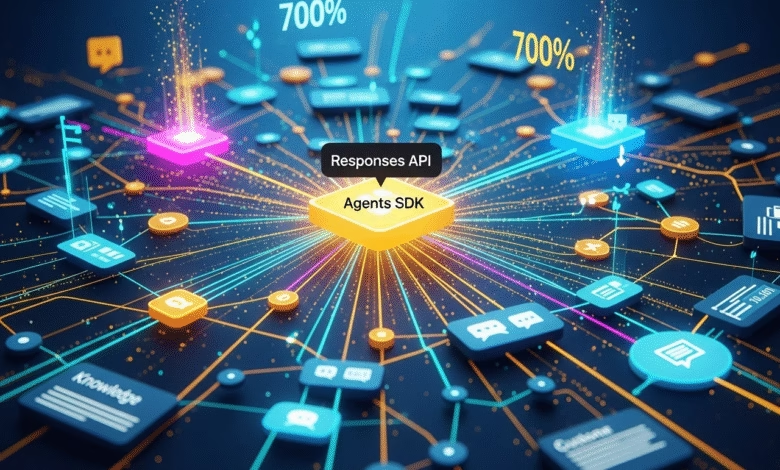OpenAI API Lead Reveals Enterprise Wins with Agents SDK & Responses API

▼ Summary
– VB Transform 2025 featured insights from OpenAI’s Olivier Godement on enterprise AI adoption, focusing on tools like the Responses API and Agents SDK.
– AI agents are shifting from prototypes to production, with OpenAI reporting a 700% year-over-year increase in token usage and over a million monthly active developers.
– Enterprises are moving from single-agent architectures to modular sub-agent systems for better scalability and complexity management.
– OpenAI’s Responses API simplifies AI workflows by handling intent-based orchestration internally, including knowledge retrieval and function calling.
– Early adopters like Stripe and Box show measurable ROI, with use cases like invoice resolution (35% faster) and zero-touch ticket triage.
Enterprise AI adoption is accelerating as businesses move beyond experimentation to deploy AI agents at scale, according to insights shared by OpenAI’s API platform lead. At a recent industry conference, Olivier Godement revealed how organizations are leveraging OpenAI’s latest developer tools, the Responses API and Agents SDK, to transform operations across finance, customer service, and knowledge management.
The discussion highlighted a pivotal shift in how companies implement AI solutions. With token usage growing 700% year-over-year, enterprises are transitioning from basic chatbots to sophisticated agent systems capable of executing complex workflows. This evolution has prompted OpenAI to introduce architectural frameworks that address real-world deployment challenges.
Architectural decisions emerged as a critical factor for success. While single-agent designs offer simplicity, Godement noted their limitations in production environments. Instead, many teams adopt modular sub-agent architectures, where specialized components handle distinct tasks, similar to roles within a human team. This approach improves reliability while scaling to enterprise complexity.
The Responses API represents a fundamental advancement in how developers interact with AI models. By abstracting away manual orchestration, it allows teams to focus on business outcomes rather than technical plumbing. Built-in capabilities for knowledge retrieval and function calling further streamline development for enterprise use cases.
Security and compliance remain top priorities, with OpenAI embedding features like policy-based refusals and SOC-2 logging directly into its platform. Godement emphasized that evaluation frameworks are equally vital, without measurable performance tracking, even the most advanced agents struggle to gain organizational trust.
Early adopters are already seeing tangible results. Stripe reports 35% faster invoice resolution using AI agents, while Box has implemented zero-touch ticket triage systems. These successes demonstrate how focused implementations in specific business functions can deliver immediate ROI.
Successful deployments often hinge on internal champions, not necessarily technologists, who persistently bridge the gap between AI capabilities and operational needs. Godement stressed that domain expertise frequently resides outside engineering teams, making tool accessibility a key focus area.
Looking ahead, OpenAI’s roadmap includes multimodal agents, long-term memory retention, and cross-cloud orchestration, enhancements that will expand current capabilities without requiring fundamental redesigns. The most transformative potential, however, lies in reasoning models that can deliberate before responding, a capability still in its infancy according to Godement.
For enterprises, the path forward involves identifying high-impact use cases, fostering cross-functional collaboration, and maintaining rigorous evaluation standards. The technology foundation exists, what separates leaders will be their ability to translate these tools into reliable, production-grade systems that address concrete business challenges.
(Source: VentureBeat)





